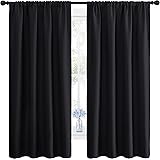Have you ever entered a room only to feel it was either too stark and clinical or, conversely, perpetually dim and unwelcoming? The issue often lies not with the decor itself, but with the frequently overlooked element of lighting. Far too often, a single, harsh overhead fixture is relied upon to illuminate an entire space, creating unflattering shadows and a generally uninviting atmosphere. However, by strategically choosing the right lighting for each room, any home can be transformed into a beautiful, functional, and deeply comfortable sanctuary. As discussed in the accompanying video, understanding the nuances of different light types and their applications is truly a game-changer for interior design.
The Foundational Pillars of Home Lighting: Ambient, Task, and Accent
Effective lighting design is typically achieved by layering different types of illumination. Each serves a distinct purpose, much like various instruments in an orchestra, which collectively create a rich and harmonious sound. Neglecting this layering can result in a one-dimensional, less engaging space.
Ambient Lighting: The Gentle Foundation
Ambient lighting is considered the primary light source within any room. It provides the general, overall illumination that prevents a space from feeling cavernous or gloomy. Often, this illumination is provided by ceiling fixtures, such as recessed lights, flush-mount lights, or chandeliers. Its role is to ensure that the room is adequately bright for general navigation and activity, without creating harsh contrasts. For instance, in a living room, a modern LED chandelier, which might be valued around $120, or an LED recessed ceiling light, typically costing about $100 per fixture, could serve this purpose. These fixtures are chosen for their ability to spread light widely and evenly across the space.
Task Lighting: Focused Brilliance for Activities
In contrast to ambient light, task lighting is specifically engineered to brighten particular areas where activities are performed. This type of lighting is critical for preventing eye strain and enhancing productivity. Consider areas like a reading nook, a kitchen countertop, or a workspace. A dimmable floor lamp, potentially priced around $50, positioned beside a favorite armchair, becomes an essential task light. Similarly, under-cabinet lighting in a kitchen is indispensable for food preparation. Such focused illumination ensures that tasks can be executed with precision and comfort, whereas general ambient light alone would often be insufficient.
Accent Lighting: Highlighting Beauty and Detail
Accent lighting is used to draw attention to specific features, textures, or architectural elements within a room. It adds drama, depth, and a touch of sophistication to a design. This could involve using spotlights to highlight a cherished piece of artwork, or wall sconces to emphasize a textured wall. While ambient light provides general visibility and task light enables functionality, accent lighting elevates the aesthetic appeal of a space. It creates visual interest and can make a room feel more curated and thoughtfully designed. For example, modern wall-light lamps or floor spotlights can be strategically placed to illuminate artwork, creating a gallery-like effect.
Beyond Fixtures: The Crucial Role of Color Temperature and Brightness
Choosing the right types of fixtures is only part of the equation; understanding the quality of light emitted is equally vital. Two significant factors are color temperature and brightness, often overlooked yet instrumental in shaping a room’s mood and functionality.
Color Temperature: Setting the Mood with Kelvin
Light’s color temperature is measured in Kelvin (K) and dramatically influences the perceived atmosphere of a room. This is a common oversight, with many assuming all light is simply “white.” However, the spectrum ranges from warm, inviting tones to cool, energizing hues.
- Warm Light (2700K-3000K): Often described as warm white or soft white, this light emits a yellowish glow, similar to traditional incandescent bulbs or candlelight. It is considered cozy and inviting, making it ideal for spaces where relaxation and comfort are prioritized. The video references 2700 Kelvin warm white light bulbs, available for approximately $16, which exemplify this welcoming ambiance. This color temperature is often preferred in bedrooms and dining rooms.
- Cool Light (4000K-5000K+): Known as cool white or daylight, this light has a bluish tint, mimicking natural daylight. It is bright and energizing, enhancing alertness and visual clarity. For task-oriented areas like kitchens, home offices, or bathrooms where precision is needed, a 5000 Kelvin LED light bulb, which might be found for around $6, is an excellent choice. It aids concentration and ensures colors are rendered accurately.
Mismatching color temperatures across an open-concept living space, for example, can create a disjointed feel. Therefore, consistency or a thoughtful blend is often advised.
Brightness: Lumens, Dimmers, and Dynamic Control
The intensity of light, measured in lumens, also demands careful consideration. A room that is too bright can feel harsh and clinical, whereas one that is too dim becomes impractical and gloomy. The goal is to achieve adequate illumination without discomfort.
Dimmable light fixtures are invaluable for adapting a room’s ambiance to various situations. For instance, in a dining room, dimmers allow the brightness of pendant lights or a chandelier to be adjusted from a festive, bright setting for a party to a soft, intimate glow for a romantic dinner. This flexibility ensures that the lighting serves multiple purposes effectively, transforming the mood with a simple adjustment. The ability to control brightness is often a marker of sophisticated lighting design.
Room-Specific Lighting Strategies: Tailoring Illumination to Function
Each room in a home serves a unique purpose, and its lighting scheme should reflect that. Generic lighting approaches typically fall short, leaving rooms feeling either under or over-lit for their intended use. Below, specific strategies are outlined for key areas.
Living Room: The Versatile Hub
The living room is often the most multi-functional space in a home, accommodating relaxation, entertainment, and social gatherings. Therefore, flexible lighting is not merely a preference but a necessity. Ambient lighting, provided by sources such as recessed ceiling lights or a statement chandelier, should establish the primary illumination. For specific tasks like reading or working on a laptop, task lighting becomes crucial. A dimmable floor lamp or a modern ceramic table lamp can be strategically placed. Furthermore, accent lighting, perhaps from modern wall-light lamps or floor spotlights, can highlight architectural details or artwork, enhancing the room’s character. The ability to switch between these layers, or dim them, allows the room’s atmosphere to be instantly adapted for various occasions, from a bright family game night to a cozy evening by the fireplace.
Dining Room: Warmth and Hospitality
The dining room calls for an atmosphere that is both warm and inviting, conducive to meals and conversation. A modern LED black chandelier or pendant light fixtures positioned directly above the dining table is often the focal point. To prevent glare and ensure even light distribution, it is recommended that these fixtures be hung approximately 30 to 36 inches above the tabletop. The video emphasizes the value of dimmers in this space, allowing the brightness to be adjusted for different occasions—from a brightly lit festive gathering to an intimate family dinner. Additionally, wall sconces or a buffet table lamp can be incorporated to add secondary layers of ambient light, enhancing the overall warmth and sophistication of the dining experience.
Bedroom: A Sanctuary of Rest
Creating a relaxing and cozy environment is paramount in the bedroom. Soft ambient lighting is generally preferred, designed to promote a sense of calm and facilitate sleep. Overhead fixtures, such as recessed ceiling lights, can provide a gentle, overall glow, but bright, glaring lights are best avoided as they can disrupt the body’s natural sleep cycle. Bedside modern black nightstand lamps or wall-mounted reading lights serve as essential task lighting for nighttime reading. Adjustable dimmable wall sconces are particularly useful for those who enjoy reading in bed. Warm-toned lights are highly recommended to foster a serene atmosphere, and the integration of dimmable lights provides control over brightness. Modern smart bulbs, often controllable via mobile phones and compatible with motion sensors, can also introduce an element of convenience and personalized ambiance, allowing for effortless adjustment of color and intensity to match one’s mood or time of day.
Kitchen: The Heart of the Home’s Workspace
As a highly functional workspace, the kitchen demands bright and efficient lighting. Under-cabinet lights are essential for illuminating countertops, ensuring visibility and safety during food preparation. These lights should be installed towards the front of the cabinets to effectively eliminate shadows. Overhead lights, such as recessed fixtures or a flush mount ceiling light, provide general illumination for the entire space. Modern pendant lights over an island or breakfast nook can add both style and targeted task lighting. It is crucial that kitchen lighting is bright enough to ensure clarity while cooking, but also flexible enough to create a more inviting atmosphere when dining. Dimmers are particularly useful here, allowing for seamless transitions between practical task lighting and a softer, more relaxed ambiance for entertaining.
Bathroom: Functional Elegance and Practicality
Proper lighting in the toilet and bath is crucial for both function and aesthetic appeal. Bathroom vanity lights are indispensable for tasks such as shaving or applying makeup. Modern vanity wall sconces, ideally placed on either side of the mirror at approximately eye level, provide even, shadow-free illumination that is flattering and functional. Overhead flush mount ceiling lights offer general light but should not be placed directly above the mirror, as this can create unflattering shadows on the face. For the shower area, waterproof recessed LED ceiling lights and shower disc lights are recommended, ensuring safety and durability in a moisture-prone environment. It is always wise to consider energy-efficient and long-lasting LED bulbs for all bathroom fixtures. The lighting should be bright enough for detailed tasks, yet capable of being dimmed to create a relaxing spa-like experience, perhaps for a soothing bath. The careful combination of these lighting types ensures the bathroom is both practical and a serene retreat.
By implementing these strategies, especially by layering ambient, task, and accent lighting, any homeowner can move beyond the common mistakes of single-source illumination. The thoughtful selection and placement of fixtures, combined with an understanding of color temperature and brightness control, are key to creating a home that is not only functional but truly stunning. The ultimate objective in choosing the right lighting for each room is to enhance both daily living and the overall aesthetic harmony of your personal space.











